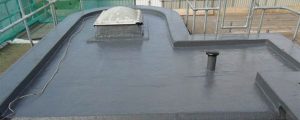Questions about liquid applied waterproofing
- What are the advantages of liquid waterproofing?
Liquid applied membranes can be beneficial for many reasons, including:
Highly effective – This type of waterproofing membrane is normally applied by hand or in spray form onto the substrate and cured to create a solid. As the spray forms a single membrane, this means no seams to worry about. This is beneficial as seams are usually highly susceptible to water penetration.
Quick – It is often speedier to implement than the liquid membrane sheet.
Ease where there is detailing – This type of waterproofing is helpful in areas where there is a lot of detail. There is no need to cut sheet membrane customized to every detail, waterproofing spray applicators do this with ease. Find out more about this and Flat Roofing Bristol at a site like Aquagard, a supplier of Flat Roofing Bristol
- Where is liquid applied waterproofing most often used?
It is often used on terraces, decking, flat roofing and green roofs. In some cases, it can be used to protect car parks and water tanks.
- Can I use liquid applied waterproofing for improvement projects?
Yes, a lot of fluid applied waterproofing products can be used as surface repairs. This can be useful for the issue of surfaces which are uneven, a common issue in improvement projects.
- Should cold liquid applied waterproofing be used?
For the majority of contractors, the hassles of applying heat to waterproofing makes little sense, especially when there are cold applied options readily available that offer the same properties or better waterproofing. Using cold applied waterproofing reduces the complexity and risk during construction, speeding up the overall installation process.


